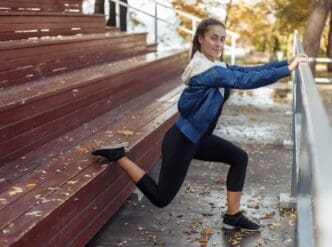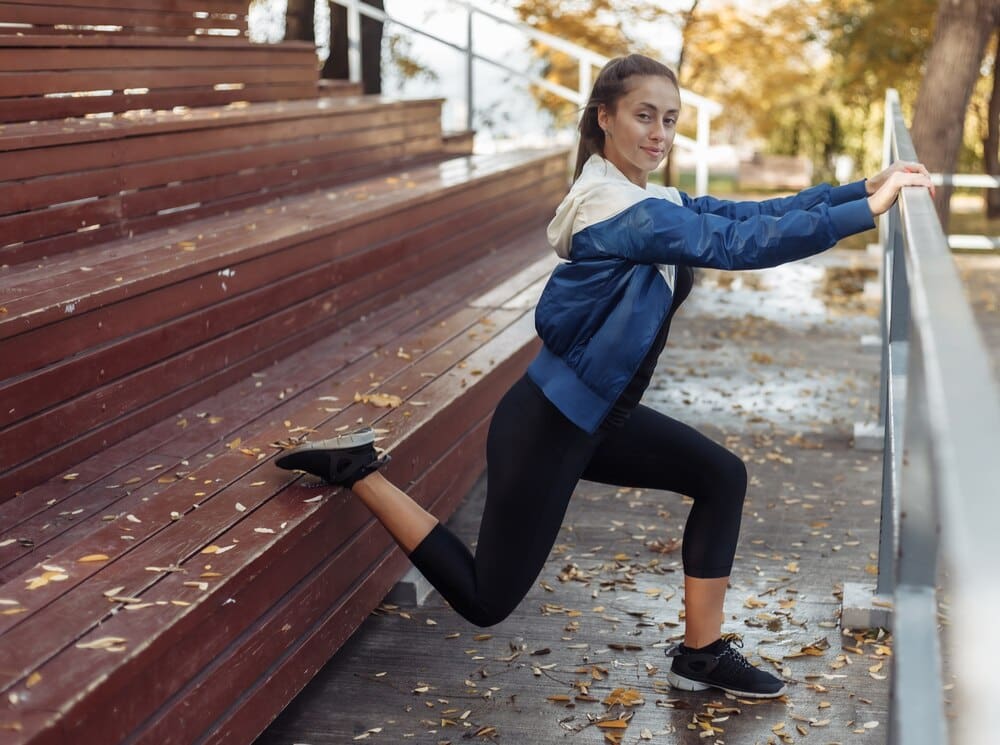The Pose Method of Running is a specific, structured technique designed to improve running efficiency and reduce injury by teaching runners to use gravity as their primary source of propulsion. Developed in the 1970s by Russian sports scientist Dr. Nicholas Romanov, the method is intended for any runner—from the weekend jogger to the elite marathoner—who wants to refine their biomechanics. The core principle involves abandoning the common heel-striking, “push-off” style of running in favor of a forward fall, landing on the ball of the foot directly under the body’s center of mass. Proponents believe this approach minimizes braking forces and lessens the impact on joints like the knees and hips, but it requires significant, dedicated practice to master and may not be the ideal solution for every individual’s body and running goals.
What is the Pose Method?
At its heart, the Pose Method deconstructs running into three simple, continuous elements: the Pose, the Fall, and the Pull. It reframes running not as an act of pushing your body forward, but as an act of continuously falling and catching yourself.
This system stands in stark contrast to the form many recreational runners adopt, which often involves overstriding—landing the foot far out in front of the body—and landing heavily on the heel. This common pattern creates a braking force with every step, wasting energy and sending a sharp impact shock up the leg.
The Three Core Components
Understanding the “Pose-Fall-Pull” sequence is essential to grasping the entire philosophy. Each component flows seamlessly into the next in a fluid, cyclical motion.
1. The Pose: This is the foundational body position and the most critical frame in the running cycle. In the Pose stance, your body forms a distinct “S” shape. Your shoulders, hips, and the ball of your supporting foot should be in a straight vertical line. Your other leg is bent, with the ankle held under the hip, ready for the next step.
This alignment is key because it places your body in a state of perfect balance, ready to be disturbed by the force of gravity. You are not leaning back or pushing forward; you are simply poised and ready to move.
2. The Fall: From the Pose stance, movement is initiated by simply allowing your center of mass to fall forward. You do not push off the ground or reach with your lead leg. Instead, you break the vertical alignment at the ankle and let gravity pull your body forward and down.
The degree of your forward lean determines your speed. A slight lean results in a slow jog, while a more pronounced lean creates a faster pace. This is arguably the most counterintuitive part of the method, as it requires trusting gravity rather than muscular effort to generate speed.
3. The Pull: Just as your body falls forward and you are about to lose balance, you pull the support foot directly up from the ground towards your hip. This is an active, quick movement led by the hamstring muscles, not the calves.
The pull is not a push-off. The goal is to lift the foot from the ground as efficiently as possible to allow the other foot to land in the Pose stance, ready to catch the falling body. This creates a continuous cycle of falling and catching, with your feet landing directly beneath your hips.
The Science and Supposed Benefits
Advocates of the Pose Method point to several evidence-based biomechanical advantages that can lead to a healthier, more sustainable running life. These benefits center on reducing impact, improving efficiency, and ultimately, preventing common running-related ailments.
Reduced Impact Forces
One of the most significant claims of the Pose Method is its ability to reduce the jarring forces associated with running. Traditional heel striking generates a distinct impact transient—a sharp spike of force that travels up the leg into the shin, knee, and hip.
By promoting a midfoot or forefoot strike directly under the center of mass, the Pose Method helps eliminate this initial shock. The landing becomes softer as the ankle, knee, and hip act as natural springs to absorb the load, rather than as rigid levers taking a direct hit.
Improved Running Economy
Running economy refers to how much oxygen (and therefore, energy) you use to maintain a certain pace. The more economical you are, the less effort you expend, allowing you to run faster or longer.
The Pose Method aims to improve economy by leveraging the free energy of gravity. By falling forward, you minimize the need for powerful muscular contractions to propel yourself. Instead of a powerful “push-off” from the calf and quadriceps, the primary muscular action becomes a quick “pull” from the hamstring, which is a more efficient movement.
This technique is also associated with a higher cadence, or step rate, typically around 180 steps per minute. A quicker, lighter stride prevents overstriding and further reduces the braking forces that waste precious energy.
Injury Prevention
By combining reduced impact and improved economy, the Pose Method is promoted as a powerful tool for injury prevention. Many common running injuries—such as runner’s knee (patellofemoral pain syndrome), shin splints, and IT band syndrome—are often linked to the repetitive stress of poor biomechanics.
By correcting issues like overstriding and heel striking, the method aims to distribute stress more evenly across the musculoskeletal system. This reduces the overload on specific joints and tissues, theoretically lowering your long-term risk of chronic injury.
The Criticisms and Potential Drawbacks
Despite its passionate following, the Pose Method is not without its critics and potential downsides. It is not a universal cure for all running woes, and for some, it may even introduce new problems if not adopted carefully.
The Steep Learning Curve
Transitioning to the Pose Method is not a simple tweak; it is a complete overhaul of your running form. For anyone who has been running for years, this means un-learning deeply ingrained motor patterns. This process requires immense patience, mindfulness, and a willingness to feel like a beginner again.
Mastery requires consistent practice of specific, and often tedious, drills. Many runners become frustrated with the slow progress and the initial decrease in performance as their bodies adapt.
Shifting the Load, Not Eliminating It
Perhaps the most significant scientific criticism of the method is that it doesn’t eliminate stress—it simply shifts it. While Pose running may decrease the load on the knees, it substantially increases the strain on the lower leg and foot.
The forefoot strike and the active pull demand much more from the calf muscles, Achilles tendon, and the small muscles and bones of the foot. Runners who transition too quickly without building the necessary strength in these areas are at a high risk for new injuries, such as Achilles tendinopathy, calf strains, and even metatarsal stress fractures.
The Mixed Scientific Evidence
While the theories behind the Pose Method are biomechanically plausible, the real-world scientific evidence is mixed. Some studies have shown a reduction in knee joint forces, but others have found no significant difference in overall injury rates or running economy when compared to other running forms.
Critics argue that there is no single “correct” way to run. Human bodies are incredibly diverse in their anatomy and physiology. Forcing every runner into a rigid, prescribed form may be counterproductive. An optimal running form is often one that a runner naturally self-selects over time to match their unique body.
How to Approach the Pose Method
If you’re intrigued by the potential benefits and undeterred by the challenges, a careful, systematic approach is crucial for a successful transition. Rushing the process is a direct path to injury.
Start Slow and Be Patient
Do not attempt to switch to Pose running overnight. Begin by integrating very short intervals of Pose form into your regular runs. For example, run in your new form for one minute, then revert to your old style for four minutes. Gradually increase the duration of the Pose intervals over several weeks and months.
Focus on Drills and Strength
Pose running is built on a foundation of specific drills designed to teach the core components. Drills like wall falls, ankle pulls, and hopping in place help ingrain the feeling of the Pose, Fall, and Pull. These should be practiced consistently.
Simultaneously, you must build the capacity to handle the new stresses. A dedicated strength training program focusing on calf raises, hamstring curls, glute bridges, and core exercises is non-negotiable. A strong foundation is essential to prevent the load-shifting injuries mentioned earlier.
Consider Professional Coaching
Because the technique is so specific, getting feedback from a certified Pose Method coach can be invaluable. A coach can analyze your form, correct subtle errors, and provide a structured plan for your transition, dramatically reducing your risk of developing bad habits or getting injured.
Is the Pose Method Right for You?
Ultimately, the decision to adopt the Pose Method is a personal one. It may be a game-changer for a runner who has been chronically sidelined by impact-related knee pain and is willing to invest the time to rebuild their form from the ground up.
However, if you are a runner who is currently healthy, enjoying your runs, and making progress toward your goals, a complete overhaul may be unnecessary. The “if it ain’t broke, don’t fix it” adage often applies to running form. Furthermore, if you have a history of Achilles, calf, or foot issues, this method could exacerbate those problems and should be approached with extreme caution, preferably under professional guidance.
The Pose Method is not a magic bullet but rather a highly structured system for re-learning how to run. It offers a compelling philosophy based on using gravity and efficiency, which has helped many runners overcome injury and find a new love for the sport. However, its rigid principles, steep learning curve, and potential to shift stress to vulnerable areas mean it is not a one-size-fits-all solution. The best running form is always the one that allows you to run consistently, comfortably, and joyfully for years to come, whether it’s the Pose Method or the unique stride your own body has perfected.







